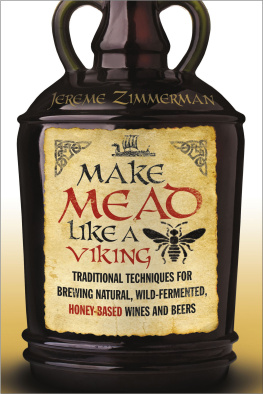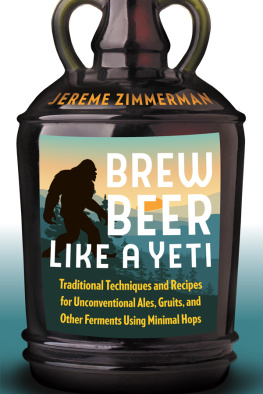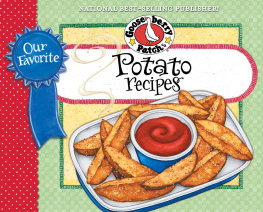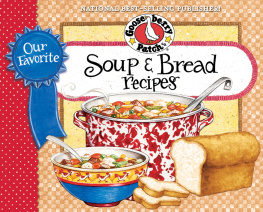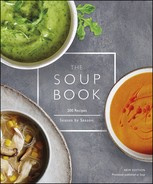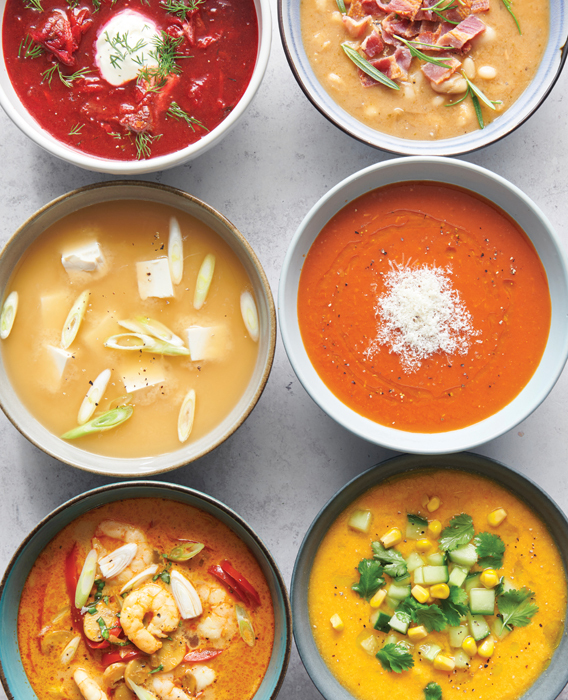Copyright 2021 by Rockridge Press, Emeryville, California
No part of this publication may be reproduced, stored in a retrieval system, or transmitted in any form or by any means, electronic, mechanical, photocopying, recording, scanning, or otherwise, except as permitted under Sections 107 or 108 of the 1976 United States Copyright Act, without the prior written permission of the Publisher. Requests to the Publisher for permission should be addressed to the Permissions Department, Rockridge Press, 6005 Shellmound Street, Suite 175, Emeryville, CA 94608.
Limit of Liability/Disclaimer of Warranty: The Publisher and the author make no representations or warranties with respect to the accuracy or completeness of the contents of this work and specifically disclaim all warranties, including without limitation warranties of fitness for a particular purpose. No warranty may be created or extended by sales or promotional materials. The advice and strategies contained herein may not be suitable for every situation. This work is sold with the understanding that the Publisher is not engaged in rendering medical, legal, or other professional advice or services. If professional assistance is required, the services of a competent professional person should be sought. Neither the Publisher nor the author shall be liable for damages arising herefrom. The fact that an individual, organization, or website is referred to in this work as a citation and/or potential source of further information does not mean that the author or the Publisher endorses the information the individual, organization, or website may provide or recommendations they/it may make. Further, readers should be aware that websites listed in this work may have changed or disappeared between when this work was written and when it is read.
For general information on our other products and services or to obtain technical support, please contact our Customer Care Department within the United States at (866) 744-2665, or outside the United States at (510) 253-0500.
Rockridge Press publishes its books in a variety of electronic and print formats. Some content that appears in print may not be available in electronic books, and vice versa.
TRADEMARKS: Rockridge Press and the Rockridge Press logo are trademarks or registered trademarks of Callisto Media Inc. and/or its affiliates, in the United States and other countries, and may not be used without written permission. All other trademarks are the property of their respective owners. Rockridge Press is not associated with any product or vendor mentioned in this book.
Interior and Designer: Angela Navarra
Art Producer: Meg Baggott
Editor: Anne Lowrey
Production Editor: Ruth Sakata Corley
Production Manager: Riley Hoffman
photo 2021 Marija Vidal, food styling by Oscar Molinar
Darren Muir,
courtesy of Court Mast Photography
ISBN: Print 978-1-63807-301-7
eBook 978-1-63807-178-5
R0
CONTENTS
When I think of the list of my all-time favorite restaurant dishes, Im surprised at how many of them are soups. From velvety carrot soup swirled with bright green chive oil at an upscale bistro to savory wonton soup at the neighborhood Chinese take-out place, from an out-of-this-world short rib and caramelized onion soup at my favorite neighborhood restaurant to a rustic tortilla soup from the local Mexican cantina, theyre among the best dishes Ive ever eaten.
I probably shouldnt be surprised; I think a love of soup was in my genes. As far back as I can remember, my dad loved soup. He always ordered soup on those rare occasions when we went out to dinner and invariably had a bowl of soup for lunch every Saturday. My mother, if not as big a fan as Dad, made soup for dinner often. And why not? With a big family, it was an economical way for her to get a balanced meal on the table. Soup was the perfect way to stretch a sandwich from lunch into a dinner, and that combination was guaranteed to please us kids. So, it was likely predeterminedI was destined to love soup.
When I was learning to cook, soup was a natural place to start. Most soup recipes are straightforward, they rarely require exotic ingredients, and theyre wonderfully adaptable. I learned to improvise as a cook by making soups and stews for my college roommates and continued to practice on my friends when I left school. Even today, whenever I dont have the exact ingredients on hand for a given recipe, I can almost always wing it and come up with a pretty good dinner.
Like many cooks, I started out thinking of soup when the weather was cold. My first soups were hearty, warming bowls brimming with chunks of meat and potatoes or noodles. But I soon found recipes that opened my eyes to soups for all seasonslight vegetable soups perfect for the early days of spring and refreshing mixtures that took advantage of fresh summer corn and tomatoes.
Thats why I was so excited to work on this book. In it, youll find 50 recipes for delicious, satisfying soupsclassics from across the country and around the world. And if youre new to the world of soup, the opening chapter will give you all the information you need to feel at ease making all kinds of soup varieties, from simple to showstopping. Whether youre cooking for a crowd, a small family, or just yourself, youll see how soup can fit into any menu.
For me, this book is a wonderful way to spread the word about how soup can change your life. Yeah, maybe Im kidding about that, but soup has so much going for itits healthy, economical, and easythat Im sure if you dont already, youll come to love soup as much as I do.
Im not alone in my love of soup. Cooks around the world agree that soup is a fundamental dish in any kitchen, no matter the cuisine or culture. With its constant appearance throughout history, soup has provided sustenance for virtually every person in every region of the world.
Historians date the first soups back some 20,000 years, and they agree that the first restaurants were likely inns where weary travelers could relax and refresh themselves with a sustaining bowl of soup or stew. Plain or fancy, thick and chunky, or brothy and fragrant, it satisfies any appetite. The classic soup recipes in this book will make you a soup expert in no time.
THE ULTIMATE COMFORT FOOD
To me (and Im sure Im not the only one), soup is comfort in a bowl. In cuisines around the world, a nourishing crock of soup is the easiest way to welcome dinner guests or feed your family. Who doesnt love a bowl of for lunch, with or without a grilled cheese sandwich?
But soup is more than simple comfort food. It fits in with todays sometimes hectic lifestylesif your familys schedule doesnt allow you to eat at the same time, you can make a batch of soup and keep it warm or reheat it so family members can enjoy it when they come home. Its also economical. Small amounts of meat or fish and the less-than-perfect vegetables from your refrigerator can be stretched into a full meal with the help of broth and flavorings. And soups are a fabulous way to use up leftovers, reducing food waste.
Soup is healthy. Soups almost always include a lot of vegetables, and while people might not agree on what counts as healthy, pretty much everyone is on board with vegetables. And they will make you a better cook. Soups are a wonderful way to practice all kinds of culinary skills. Chopping all those vegetables will improve your knife work, and soups are a perfect canvas for exploring combinations of ingredients.




